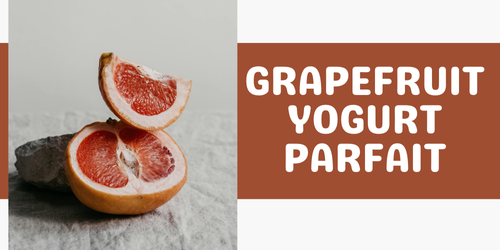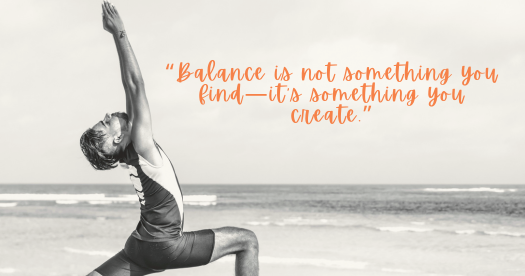| The Fiber Fix: The Secret to Feeling and Living Your Best |

Fiber is often talked about, but rarely fully understood. This powerful nutrient quietly supports digestion, heart health, blood sugar balance, and overall well-being. Here are seven key facts about fiber that explain why it deserves a regular place on your plate.
- Fiber is found in plant-based foods, including fruits, vegetables, whole grains, beans, nuts, and seeds. Because fiber isn't fully digested or absorbed, it moves through the digestive system, where it plays an important role in supporting gut health and overall wellness.
- There are two main types of fiber: soluble and insoluble fiber. Soluble fiber dissolves in water and forms a gel-like substance. It helps lower LDL ("bad") cholesterol and supports blood sugar control. Insoluble fiber adds bulk and helps food move through the digestive tract, supporting regularity. Most fiber-rich foods contain both.
- Fiber supports digestive regularity. One of fiber's most well-known benefits is digestive support. Adequate fiber intake helps prevent constipation, promotes regular bowel movements, and supports a healthy gut environment. When paired with enough fluids, fiber helps digestion work more comfortably and efficiently.
- Fiber helps you feel fuller longer. High-fiber foods tend to be more filling and are digested more slowly than low-fiber foods. Fiber-rich foods help to increase feelings of fullness and satisfaction after meals, which can naturally support appetite regulation and mindful eating, without strict rules or restriction.
- Fiber plays a role in heart health. Soluble fiber can bind to cholesterol particles in the digestive tract, helping remove them from the body. Over time, this process can help lower LDL cholesterol levels and support cardiovascular health.
- Fiber helps stabilize blood sugar. By slowing the digestion and absorption of carbohydrates, fiber helps reduce sharp blood sugar spikes and crashes. Fiber-rich meals help maintain steady energy levels throughout the day and support better metabolic health
- Most people don't get enough fiber. Despite its benefits, most adults consume far less fiber than recommended. The National Academy of Medicine gives the following daily fiber recommendations for adults:
- 21 grams for women older than age 50.
- 25 grams for women age 50 or younger.
- 30 grams for men older than age 50.
- 38 grams for men age 50 or younger.
Small changes such as adding fruit to breakfast, vegetables to meals, or beans a few times per week, can make a meaningful difference.
The Bottom Line: Fiber works quietly but powerfully. By consistently including fiber-rich foods such as fruits, vegetables, whole grains, beans, nuts, and seeds, you give your body simple tools to support digestion, heart health, blood sugar balance, and daily comfort. |
|
|
|
| Supplement Spotlight: Psyllium Fiber |
 While fiber-rich foods should always be the foundation of a healthy eating pattern, some people may benefit from additional fiber support. While fiber-rich foods should always be the foundation of a healthy eating pattern, some people may benefit from additional fiber support.
Psyllium is a soluble fiber derived from the husks of Plantago ovata seeds. When mixed with liquid, it absorbs water and forms a gel-like substance in the digestive tract. This unique property allows psyllium to support multiple aspects of health.
One of the best-known benefits of psyllium is its role in improving digestive regularity. Softening stool and adding bulk, it can help promote consistent bowel movements without harsh laxative effects. Psyllium has also been shown to help lower LDL (“bad”) cholesterol, supporting heart health when used regularly as part of a balanced diet.
Psyllium may also help with blood sugar control by slowing the absorption of carbohydrates after meals, supporting steadier energy levels, and improving glycemic response.
Psyllium supplements are available as powders, capsules, and fiber blends. When using psyllium, it's essential to start with a small amount, increase gradually, and drink plenty of water to support digestive comfort.
While psyllium can be a helpful tool, it works best when paired with fiber-rich foods such as fruits, vegetables, whole grains, beans, nuts, and seeds. As with any supplement, individuals with digestive conditions or those taking medications should consult a healthcare provider before use. |
|
|
|
|
Grapefruit Yogurt Parfait |

Grapefruit Yogurt Parfait
Ingredients (makes 2 servings):
- 1 large grapefruit, peeled and segmented
- 1 cup low-fat vanilla or plain Greek yogurt
- ½ cup granola (or crushed whole-grain cereal)
- 1–2 teaspoons honey or maple syrup (optional)
- Fresh mint leaves (optional, for garnish)
Instructions:
- Peel the grapefruit and separate into bite-sized segments. Remove any seeds.
- In a clear glass or small bowl, layer 2–3 spoonfuls of yogurt.
- Add a layer of grapefruit segments, then sprinkle granola on top.
- Repeat layers until glass is full, finishing with yogurt and a few grapefruit slices on top.
- Drizzle with honey (if using) and garnish with mint.
Nutrition Spotlight: This parfait combines protein and calcium from yogurt, fiber from granola, and vitamin C from grapefruit. It’s a delicious way to start the day or enjoy as a healthy snack.
Kid-Friendly Tip: Kids can help layer the ingredients to “build” their own parfaits — making it a fun, hands-on way to enjoy grapefruit. |
|
|
|
|
 |
|
|
|
|
|
|
|
| Copyright © 2026 Affy Health, LLC, All rights reserved. |
|
|
